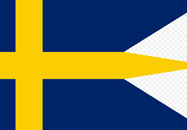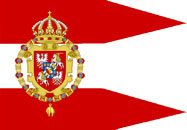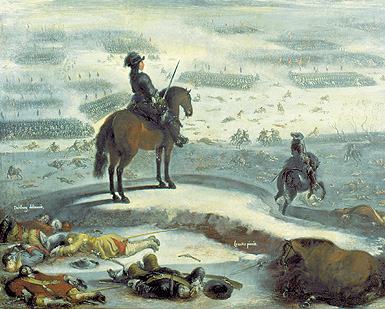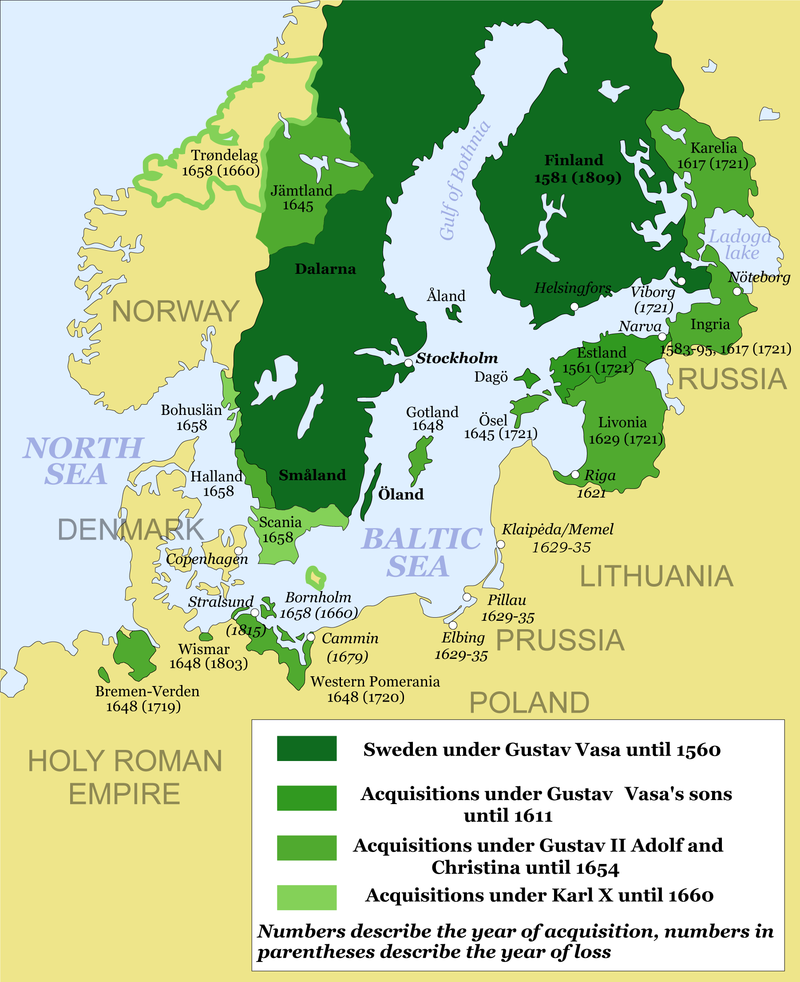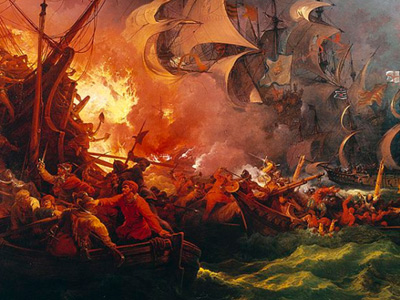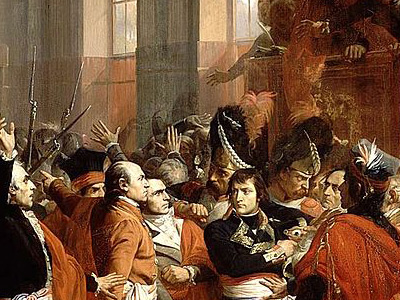Second Northern War (1655–1660)

Occupation of Poland-Lithuania and the Brandenburgian intervention
Meanwhile, Russian and Cossack forces had occupied the east of the Polish–Lithuanian Commonwealth as far as Lublin, with only Lwow (Lviv, Lemberg) remaining under Polish–Lithuanian control. In late October, Charles X Gustav headed northwards and left Wittenberg in Kraków with a mobile force of 3,000 Swedish and 2,000 Polish troops, and an additional number scattered in garrisons, to control the southern part of the Swedish-occupied commonwealth.
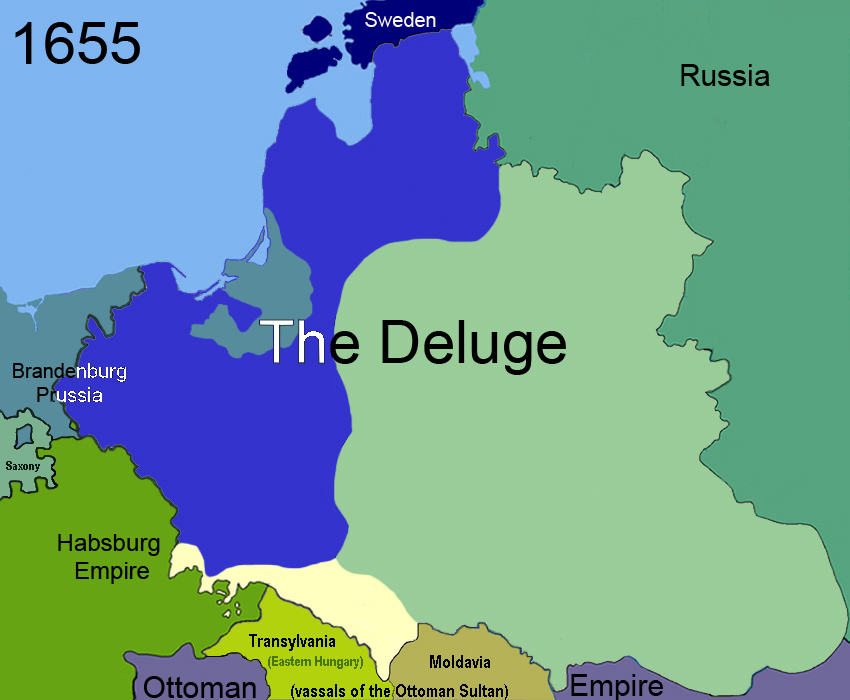
Approximate extent of Swedish-occupied (light blue) and Russian-occupied (light green) Poland-Lithuania
In the north, the Royal Prussian nobles concluded a defensive alliance with the Electorate of Brandenburg on 12 November in the Treaty of Rinsk, permitting Brandenburgian garrisons. Danzig (Gdansk), Thorn (Torun) and Elbing (Elblag) had not participated in the treaty, with Thorn and Elbing surrendering to Sweden. In the Treaty of Königsberg on 17 January 1656, Frederick William, Elector of Brandenburg and Duke of Prussia, took the Duchy of Prussia, formerly a Polish fief, as a fief from Charles X Gustav. The Brandenburgian garrisons in Royal Prussia were withdrawn, and when Marienburg (Malbork) surrendered in March, Danzig remained the only town not under Swedish control.
The rapid Swedish invasion and occupation of the Polish–Lithuanian territories became known in Poland as the "(Swedish) deluge."
HISTORY
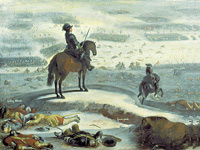
RESOURCES
This article uses material from the Wikipedia article "Second Northern War", which is released under the Creative Commons Attribution-Share-Alike License 3.0.
© Stories Preschool. All Rights Reserved.

